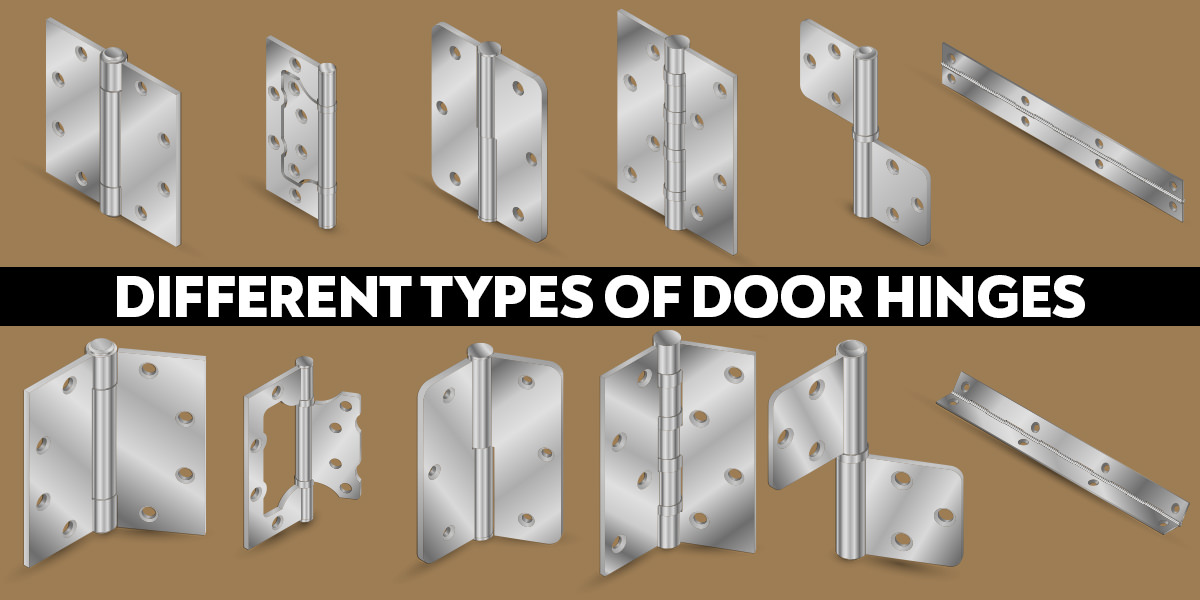
Introduction: Why Different Types of Door Hinges Are Popular
Door hinges might seem like a small detail, but they're essential to the look and feel of your home. The right hinge can complement your interior design, add a touch of character, and ensure your doors fit seamlessly into your space. Whether you're after something simple, decorative, or cutting-edge, there's a hinge to suit every style.
From traditional brass to modern black finishes, door hinges offer more than just utility.
This guide will explore the different types of hinges, their materials, and everything you need to know to make the perfect choice for your doors.
Understanding The Different Types of Door Hinges and Their Applications
What Are Door Hinges?
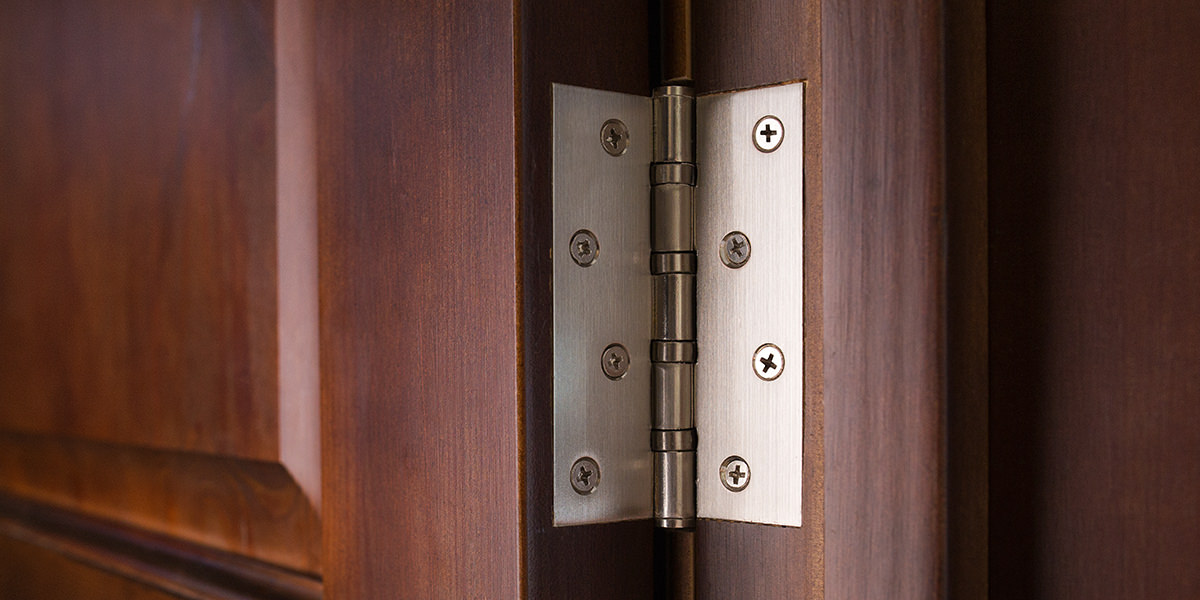
Door hinges connect the door to its frame, allowing it to pivot open and close. They come in many types, each designed for specific purposes. Common examples include butt hinges, tee hinges, and flush hinges, all of which provide varying levels of support and style.
Hinges can also serve aesthetic purposes. Decorative options like brass or black hinges can add character to a room, while innovative designs enhance functionality.
Choosing the right hinge ensures that your doors work efficiently and complement your home's style.
Common Materials for Different Types of Door Hinges
Door hinges are made from a range of materials, each suited to different needs. Steel is widely used for its strength and durability, making it ideal for heavy doors. Brass hinges are another popular choice, offering a classic, rust-resistant look.
Black hinges, often made from iron or steel, are treated with protective coatings to prevent rust and add a modern touch. Stainless steel hinges are ideal for outdoor use, as they resist weathering and require minimal maintenance. For specialised applications, hinges may also be made from aluminium or zinc alloys.
Types of Door Hinges
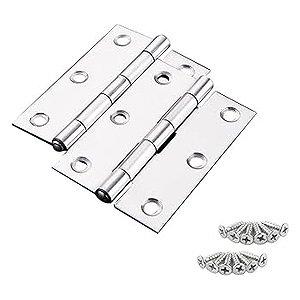
Butt Hinges Butt hinges are one of the most common types and are used for both interior and exterior doors. They consist of two rectangular plates joined by a pin, allowing the door to swing open smoothly.
These hinges are typically recessed into the door and frame, creating a clean, streamlined look.
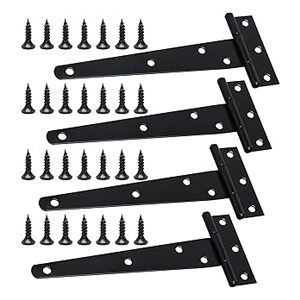
Tee Hinges Also known as strap hinges, tee hinges feature a long, decorative strap that extends across the door. Their design distributes the door's weight evenly, making them perfect for gates, garden sheds, or rustic-style interiors.
They are both functional and decorative, with a traditional look that adds character.
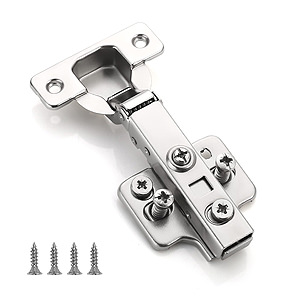
Cabinet HingesCabinet hinges are specifically designed for cupboards, drawers, and other storage units. They are available in concealed styles that stay hidden when the door is closed, providing a sleek and modern appearance.
These hinges are commonly used in kitchens and bathrooms for a clean, polished look.
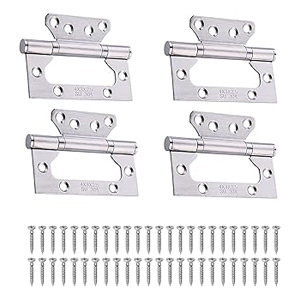
Flush Hinges Flush hinges are compact and discreet. One plate fits neatly into the other, allowing the door to sit flush with the frame.
These hinges are ideal for lightweight doors and smaller furniture pieces, offering a minimalist aesthetic with easy installation.
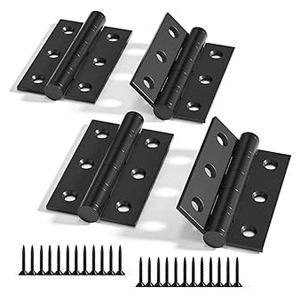
Black Hinges Black hinges are functional and stylish, making them a popular choice in modern interiors. Their dark finish adds a bold, contemporary touch, while their durable coatings resist rust and wear.
They're especially suited to industrial or monochrome designs.
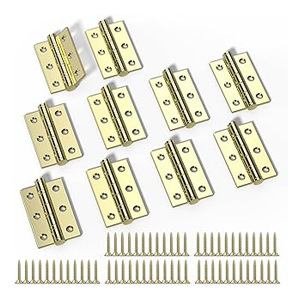
Brass Hinges Brass hinges bring a classic elegance to doors and furniture. Their warm tone suits traditional and period properties, while their corrosion resistance ensures longevity.
Brass hinges are available in polished or antique finishes and can complement a variety of interior styles.
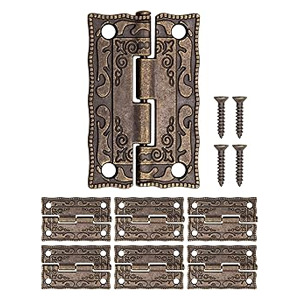
Classic Door Hinge Styles Classic hinge styles include ornate designs and finishes that evoke traditional craftsmanship.
These hinges often feature intricate detailing, such as ball tips or decorative engravings, which add a touch of elegance to older homes or heritage properties.
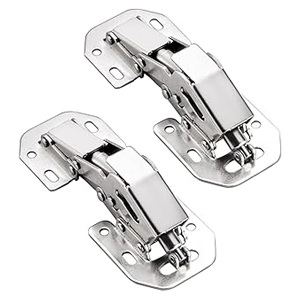
Modern Door Hinge InnovationsModern hinges focus on functionality and aesthetics. Soft-close hinges are a popular innovation, ensuring doors shut quietly and gently.
Other advancements include concealed hinges for a seamless appearance and self-closing mechanisms that enhance convenience in high-traffic areas.
Different Types of Door Hinge Buying Guide
Key Factors to Consider
When buying door hinges, start by considering the door's size, weight, and purpose.
Heavy doors require sturdy hinges, such as ball-bearing or continuous hinges. For lighter doors, flush or butt hinges are usually sufficient.
Think about the hinge's finish and how it complements your interior. Black hinges work well in industrial spaces, while brass hinges add warmth to traditional homes.
For outdoor doors, choose materials like stainless steel that resist corrosion.
Cost Comparison by Material and Style
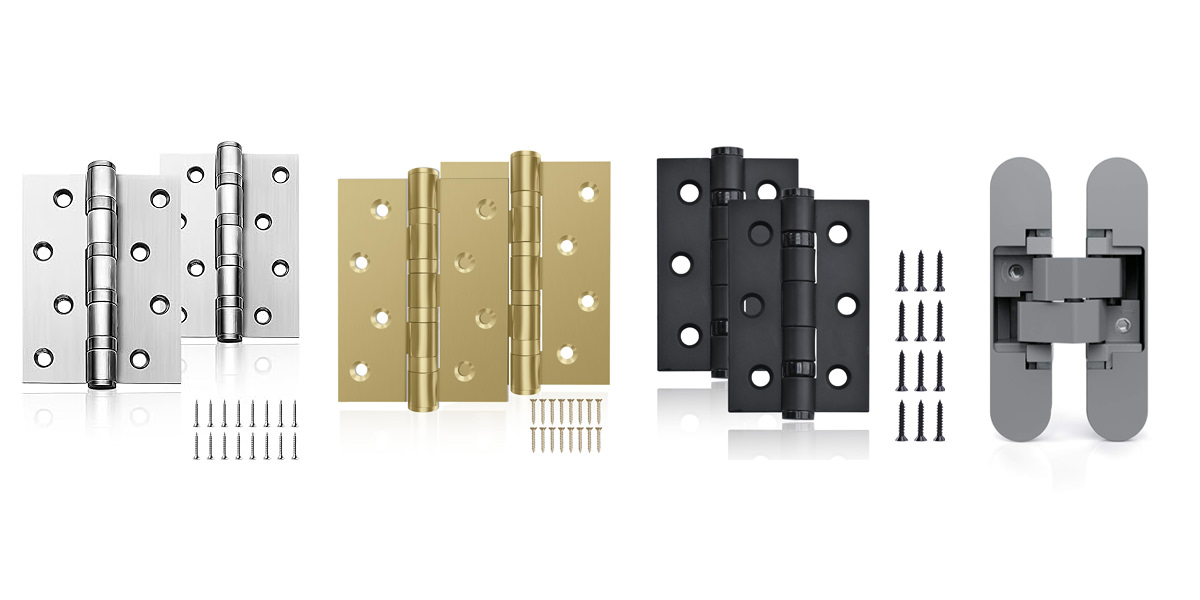
Hinge prices vary depending on the material, finish, and design.
Standard steel hinges are the most affordable, while decorative options like brass or black hinges tend to cost more.
Innovations like soft-close mechanisms or concealed designs have a higher price tag but provide added value and convenience.
Investing in high-quality hinges ensures durability and smooth operation over time, making them a worthwhile purchase for frequently used doors.
Maintenance Tips for Different Types of Door Hinges
Cleaning and Care
Keeping your door hinges clean is a simple but crucial step in maintaining their appearance and functionality.
For metal hinges like stainless steel or brass, use a soft cloth and mild detergent to remove dust, grime, and fingerprints. Avoid abrasive materials that could scratch the finish, especially for decorative hinges with polished or antique finishes.
For black hinges, a damp cloth is often enough to keep them looking fresh. If the hinges have started to lose their lustre, use a non-abrasive cleaner or a wax-based polish to restore their finish.
Hinges with moving parts, such as ball-bearing or soft-close designs, benefit from regular cleaning to ensure smooth operation and prevent dirt buildup from causing mechanical issues.
Don't forget the hidden parts of the hinge. Dust and dirt can accumulate in crevices, so use a small brush or compressed air to clean hard-to-reach areas. This small effort can go a long way in prolonging the life of your hinges.
Handling Wear and Tear
Over time, even the most durable hinges can show signs of wear, especially in high-traffic areas like entryways or kitchen cupboards. If you notice squeaking, apply a small amount of silicone spray or lubricant to the hinge pin and pivot points.
Loose screws are another common issue. Regularly check the hinges to ensure all screws are tight. If a screw hole has become worn and can no longer hold the screw securely, consider using a wooden dowel or a plug-and-glue solution to reinforce it before replacing the screw.
Rust is another potential problem, particularly for outdoor or bathroom hinges exposed to moisture. If rust develops, use a wire brush or fine sandpaper to remove it, then apply a rust-resistant coating or touch-up paint to protect the hinge.
Replacing heavily corroded hinges is recommended to ensure the door continues to operate safely.
Energy Efficiency and Sustainability
Quality hinges improve energy efficiency by ensuring doors close properly, reducing draughts and heat loss.
Opting for durable materials like stainless steel or brass reduces the need for replacements, making them a sustainable choice. Additionally, recycling old hinges helps minimise environmental impact.
Conclusion: Finding the Perfect Door Hinge
Door hinges may be small, but they have a big impact on functionality and style. From practical options like butt hinges to decorative black or brass designs, there's a hinge to suit every need. Modern innovations, such as soft-close and concealed hinges, add convenience and elegance to contemporary spaces.
By understanding the different types of door hinges and their applications in this guide, you can select hinges that complement your doors and enhance your home. With the right choice, hinges can provide lasting durability and elevate the overall look of your interiors.
Related Articles
Category
Doors & WindowsPosted On
14th December 2021



